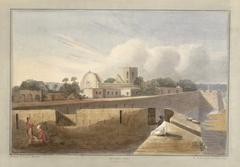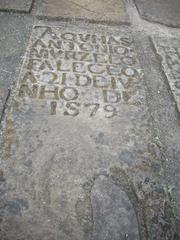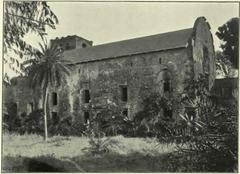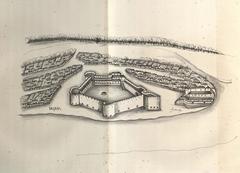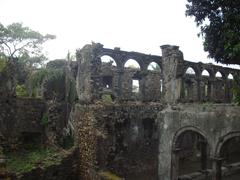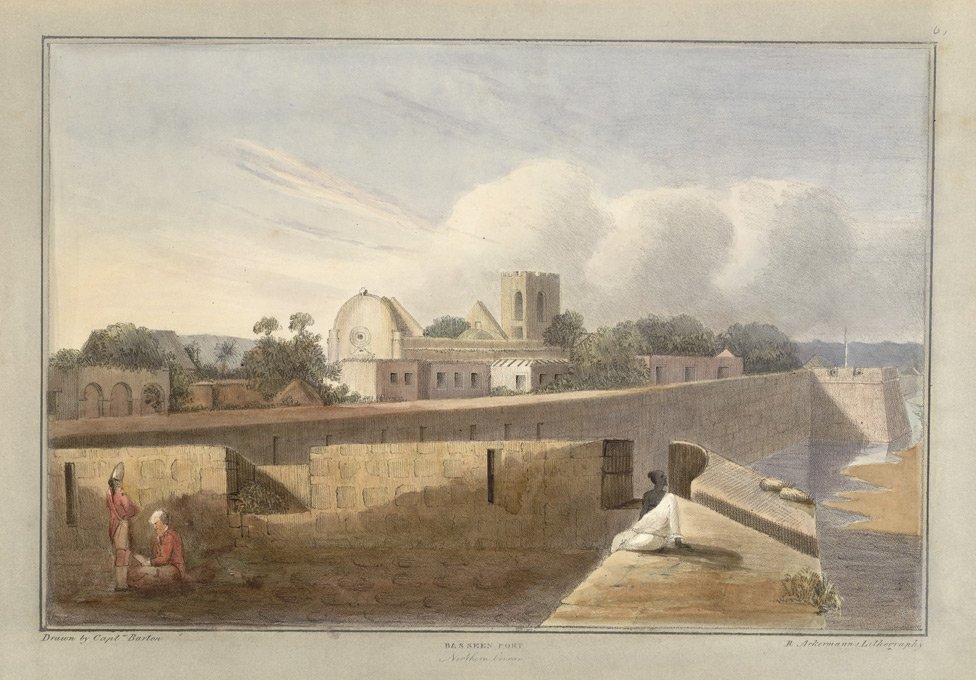
Fort Vasai Visiting Hours, Tickets, and Historical Experiences: An In-Depth Guide
Date: 14/06/2025
Introduction
Fort Vasai, historically known as Bassein Fort or Fortaleza de São Sebastião de Baçaim, stands as one of Maharashtra’s most significant historical and cultural landmarks. Located approximately 48 to 60 kilometers north of Mumbai in the Vasai-Virar region, this 16th-century fort complex encapsulates centuries of change—from its ancient role as a maritime hub to its Portuguese, Maratha, and British chapters. Today, Fort Vasai is celebrated for its impressive ruins, Indo-Portuguese architecture, panoramic sea views, and vibrant living traditions. This comprehensive guide offers detailed insights into Fort Vasai’s historical significance, visiting hours, ticket information, accessibility, architectural features, nearby attractions, and the unique cultural and culinary experiences that await every visitor.
Table of Contents
- Historical Overview
- Architectural Features and Urban Layout
- Cultural and Community Significance
- Visitor Information
- Nearby Attractions
- Culinary and Cultural Experiences
- Practical Tips for Visitors
- FAQs
- Conclusion and Call to Action
- References
Historical Overview
Early Origins and Pre-Portuguese History
The Vasai region, known in ancient times as Bassein, has long held strategic and commercial importance along India’s west coast. Derived from the Sanskrit ‘Vaas’ (dwelling), Vasai was a prominent port and trading center, frequented by Greek, Arab, Persian, and Roman traders (Vasai City). Historic travelers such as Marco Polo and Xuan Zhang referenced the area, underscoring its role in international commerce. Prior to European rule, the region passed through the hands of the Mauryas, Satavahanas, Chalukyas, and the Gujarat Sultanate. The nearby port of Sopara (modern Nalasopara) was especially important as a Buddhist center and Silk Route node (Audiala).
Portuguese Era (1534–1739)
The Portuguese established their rule in 1534, transforming Vasai into their Northern Province capital and building the formidable Fortaleza de São Sebastião de Baçaim (Vasai Fort) by 1536 (Vasai City; Travel India Destinations). The fort complex, sprawling over 110 acres, became a center for administration, commerce, shipbuilding, and religious activity. The Portuguese constructed colleges, hospitals, markets, and a series of grand churches—many of whose ruins are visible today. Their Indo-Portuguese architectural legacy is evident in the fort’s thick ramparts, bastions, arched gateways, and ecclesiastical structures.
Maratha and British Periods
In 1739, the Marathas, led by Chimaji Appa, captured the fort from the Portuguese after a decisive siege (Travel India Destinations). While it remained a strategic outpost for the Marathas, its prominence waned. The British took control in 1780 following the First Anglo-Maratha War, integrating Vasai (renamed Bassein) into the Bombay Presidency. Under British administration, the fort gradually fell into disuse, and its structures deteriorated (Vasai City). Today, Vasai forms part of the rapidly growing Vasai-Virar urban region.
Architectural Features and Urban Layout
Fort Vasai is a remarkable example of 16th- and 17th-century Indo-Portuguese military architecture (Mumbai Tourism; Wikipedia). The fort’s walls stretch over 4.5 kilometers, enclosing an urban complex that included:
- Main Citadel and Gates: The landward entrance leads into a citadel housing administrative buildings and residences (Travel India Destinations).
- Defensive Structures: Massive basalt and laterite ramparts, eleven semi-circular bastions with cannon embrasures, and watchtowers for panoramic surveillance (Mumbai Tourism).
- Ecclesiastical Ruins: Remnants of major churches—Holy Name of Jesus, Saint Joseph’s, and the Franciscan Church of Saint Anthony—showcase vaulted ceilings and intricately carved facades (Navrang India).
- Civic Infrastructure: The fort featured libraries, hospitals, granaries, and trader’s markets.
- Underground Tunnels: Partially accessible tunnels reflect advanced defense planning.
Despite centuries of neglect, the fort’s ruins—arched gateways, decorative carvings, and imposing bastions—continue to evoke its former grandeur.
Cultural and Community Significance
Religious and Multicultural Heritage
Fort Vasai is a living testament to religious coexistence. The region is home to over 40 active Portuguese-era churches, as well as temples and mosques, reflecting its layered history (TripSavvy; TripXL). The Maratha conquest brought new festivals and traditions, creating a unique blend of East Indian Christian, Maharashtrian, and other cultural influences.
Contemporary Role
Today, Fort Vasai is a protected monument under the Archaeological Survey of India (Wikipedia). It serves as a venue for heritage walks, cultural festivals, and community events, and is a popular location for photography, film shoots, and birdwatching (Maharashtra Tourism). Community-led clean-ups and preservation efforts ensure ongoing conservation (Vasai.com).
Visitor Information
Visiting Hours and Tickets
- Timings: Fort Vasai is open daily from 9:00 AM to 6:00 PM (Audiala; Mumbai Tourism).
- Entry Fee: Entry is generally free for all visitors. Some sources report nominal fees for foreign tourists or special events—carry some cash and check the latest details before visiting (Tripoto).
Getting There
- By Train: Vasai Road railway station (Western Railway) is about 3–5 km from the fort; take a taxi or auto-rickshaw from the station (Mumbai Tourism).
- By Road: Accessible via NH48 and local buses or taxis from Mumbai and Vasai-Virar.
- By Air: Chhatrapati Shivaji Maharaj International Airport in Mumbai is around 48–50 km away.
Accessibility and Facilities
- Terrain: The fort has uneven, sometimes overgrown paths and crumbling structures—wear sturdy footwear and take caution.
- Facilities: Limited restrooms near the entrance; no food stalls inside. Carry water and snacks.
- Parking: Limited parking is available—arrive early on weekends or public holidays.
- Guided Tours: Local guides can be hired at the entrance for deeper historical insights (Mumbai Tourism).
- Safety: Avoid visiting after dark; explore in groups; supervise children and elderly visitors.
Nearby Attractions
- Our Lady of Grace Church: One of Maharashtra’s oldest churches.
- Arnala Fort: Accessible by ferry from Arnala village, about 9 km away.
- Jivdani Temple: Popular hilltop temple in Virar.
- Suruchi, Arnala, and Rajodi Beaches: Serene coastal spots.
- Sopara Caves: Ancient Buddhist caves for history enthusiasts (Travellers of India).
Culinary and Cultural Experiences
Local Festivals and Community Life
The Vasai region celebrates a diverse array of festivals, from Christian feasts (like the Feast of Our Lady of Mercy) to Hindu festivals such as Ganesh Chaturthi and Holi. These events often feature processions, music, communal meals, and traditional dance (Travel India Destinations; AllEvents.in).
Art, Handicrafts, and Daily Life
Villages around the fort (e.g., Papdi, Sandor, Agashi) are known for woodwork, pottery, weaving, and East Indian Christian folk arts. Markets and small shops offer handmade items, especially during festivals.
Local Cuisine
Vasai’s food scene is famous for its fusion of Maharashtrian, Portuguese, and East Indian flavors:
- Seafood Specialties: Fish fry, fish curry, prawns biryani, crab masala, bombil fry.
- Vegetarian Dishes: Sol Kadhi, vada pav, misal pav.
- East Indian Delicacies: Fugias, vindaloo, sorpotel.
Recommended Restaurants
- Farmhouse Sea N Sand: Renowned for seafood and sea views (Farmhouse Sea N Sand).
- Panchvati Hotel: Budget-friendly, near Vasai Station (Vasai Virar News).
- Vasai Local Restaurant: Authentic Vasai seafood (Vasai Local Restaurant).
Food Festivals and Experiences
Food festivals and pop-up events coincide with cultural celebrations, offering seafood feasts and traditional thalis. Try homemade snacks via tiffin services or community-based cooking (Vasai Virar News).
Practical Tips for Visitors
- Best Time to Visit: October to March for pleasant weather and festivals.
- What to Carry: Water, snacks, sunscreen, a hat, insect repellent, first-aid kit.
- Dress Code: Modest and comfortable clothing, especially at religious sites.
- Sustainable Tourism: Support local businesses, avoid littering, and respect conservation efforts (TravelSetu).
- Language: Marathi is primary, but Hindi and English are widely understood.
FAQs
Q: What are the Fort Vasai visiting hours?
A: Daily from 9:00 AM to 6:00 PM.
Q: Is there an entry fee?
A: Entry is generally free; check for possible nominal charges for special events or foreign visitors.
Q: How do I reach Fort Vasai from Mumbai?
A: Take a train to Vasai Road station (Western Railway), then a taxi or auto-rickshaw to the fort.
Q: Are guided tours available?
A: Yes, local guides offer tours at the entrance and through local agencies.
Q: Is the fort wheelchair accessible?
A: Due to uneven terrain and stairs, wheelchair access is limited.
Q: What is the best time to visit?
A: October to March for cool weather and festivals.
Conclusion and Call to Action
Fort Vasai is a living repository of Maharashtra’s history, architecture, and cultural diversity. Its expansive ruins, vibrant festivals, and renowned cuisine create a multifaceted experience for every traveler. Plan your visit during the recommended months to enjoy the best of what Vasai has to offer. Download the Audiala app for audio guides, real-time updates, and exclusive travel resources. Respect the site’s heritage, engage with local traditions, and immerse yourself in the authentic spirit of Vasai.
For more on Maharashtra’s historic sites, cultural events, and travel tips, explore the references below and follow our social media channels. Begin your journey at Fort Vasai—where every stone tells a story.
References and Further Reading
- Vasai City, Discover the City (Vasai City)
- Travel India Destinations, Vasai Fort near Mumbai (Travel India Destinations)
- Audiala, Vasai-Virar Information (Audiala)
- Mumbai Tourism, Fort Bassein (Vasai Fort) (Mumbai Tourism)
- Wikipedia, Fort Vasai (Wikipedia)
- TripSavvy, Mumbai Side Trip: Vasai Tour (TripSavvy)
- Vasai Virar News, Food and Culinary Scene (Vasai Virar News)
- Travellers of India, Places to Visit in Vasai-Virar (Travellers of India)
- TravelSetu, Bassein Fort Tourism Guide (TravelSetu)
- Farmhouse Sea N Sand (Farmhouse Sea N Sand)
- Vasai Local Restaurant (Vasai Local Restaurant)
